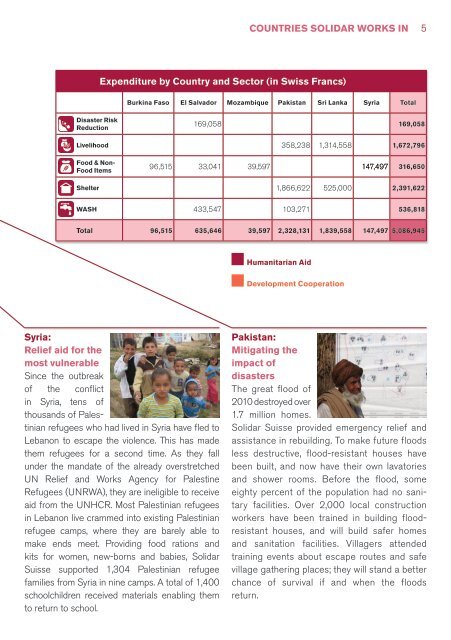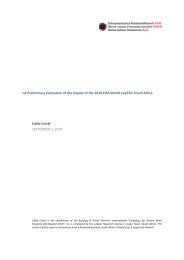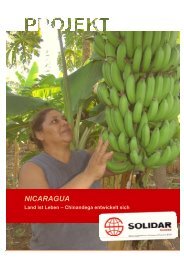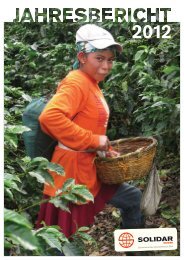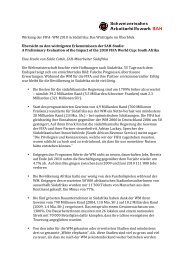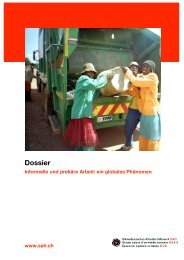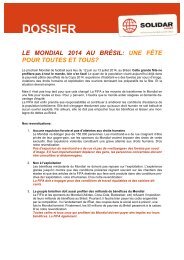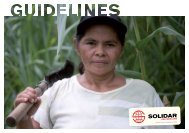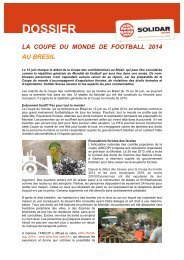German - Solidar Suisse
German - Solidar Suisse
German - Solidar Suisse
Create successful ePaper yourself
Turn your PDF publications into a flip-book with our unique Google optimized e-Paper software.
Countries <strong>Solidar</strong> works in<br />
5<br />
Expenditure by Country and Sector (in Swiss Francs)<br />
Burkina Faso El Salvador Mozambique Pakistan Sri Lanka Syria Total<br />
Disaster Risk<br />
Reduction<br />
169,058 169,058<br />
Livelihood 358,238 1,314,558 1,672,796<br />
Food & Non-<br />
Food Items<br />
96,515 33,041 39,597 147,497 316,650<br />
Shelter 1,866,622 525,000 2,391,622<br />
WASH 433,547 103,271 536,818<br />
Total 96,515 635,646 39,597 2,328,131 1,839,558 147,497 5,086,945<br />
Humanitarian Aid<br />
Development Cooperation<br />
Syria:<br />
Relief aid for the<br />
most vulnerable<br />
Since the outbreak<br />
of the conflict<br />
in Syria, tens of<br />
thousands of Palestinian<br />
refugees who had lived in Syria have fled to<br />
Lebanon to escape the violence. This has made<br />
them refugees for a second time. As they fall<br />
under the mandate of the already overstretched<br />
UN Relief and Works Agency for Palestine<br />
Refugees (UNRWA), they are ineligible to receive<br />
aid from the UNHCR. Most Palestinian refugees<br />
in Lebanon live crammed into existing Palestinian<br />
refugee camps, where they are barely able to<br />
make ends meet. Providing food rations and<br />
kits for women, new-borns and babies, <strong>Solidar</strong><br />
<strong>Suisse</strong> supported 1,304 Palestinian refugee<br />
families from Syria in nine camps. A total of 1,400<br />
schoolchildren received materials enabling them<br />
to return to school.<br />
Pakistan:<br />
Mitigating the<br />
impact of<br />
disasters<br />
The great flood of<br />
2010 destroyed over<br />
1.7 million homes.<br />
<strong>Solidar</strong> <strong>Suisse</strong> provided emergency relief and<br />
assistance in rebuilding. To make future floods<br />
less destructive, flood-resistant houses have<br />
been built, and now have their own lavatories<br />
and shower rooms. Before the flood, some<br />
eighty percent of the population had no sanitary<br />
facilities. Over 2,000 local construction<br />
workers have been trained in building floodresistant<br />
houses, and will build safer homes<br />
and sanitation facilities. Villagers attended<br />
training events about escape routes and safe<br />
village gathering places; they will stand a better<br />
chance of survival if and when the floods<br />
return.


